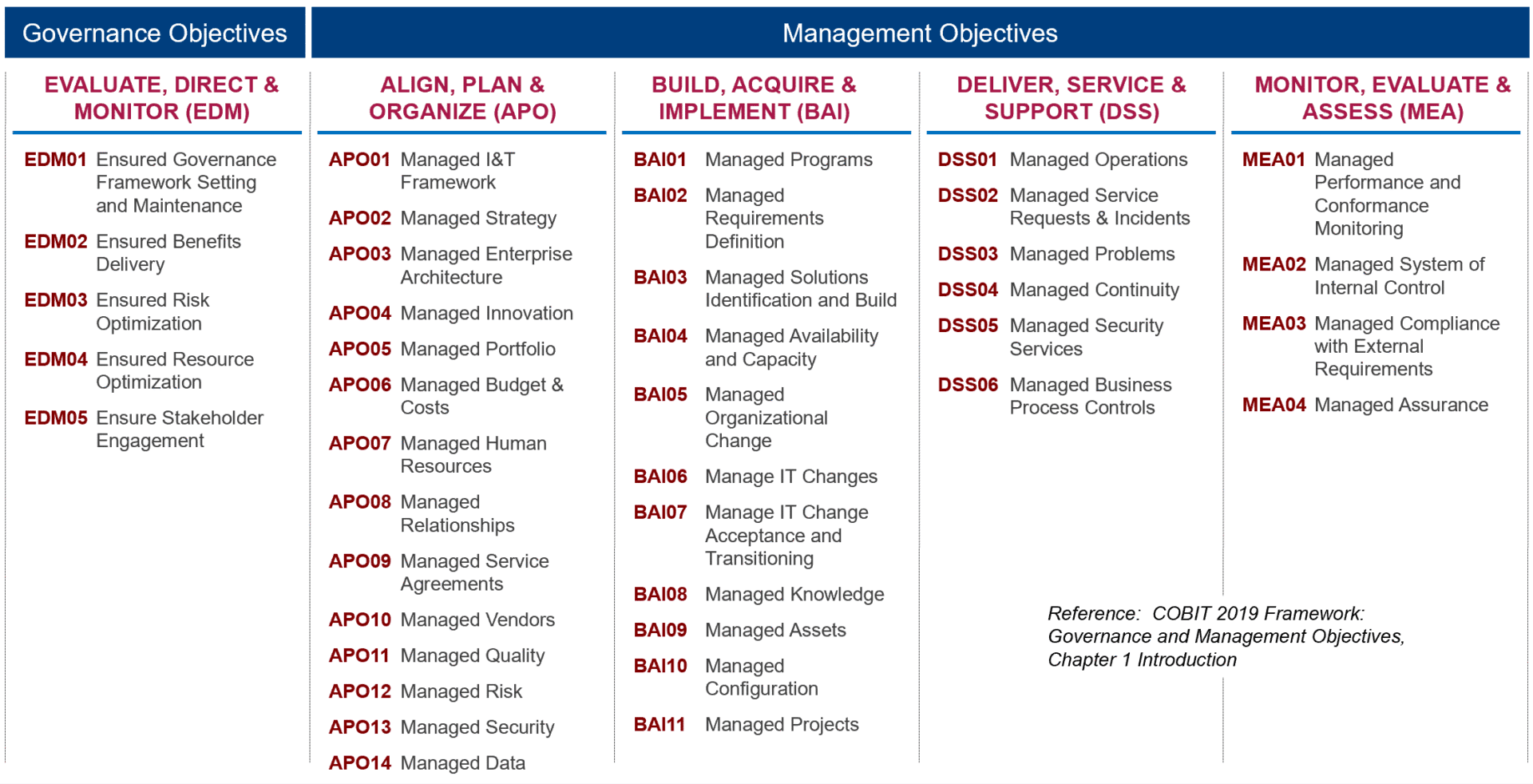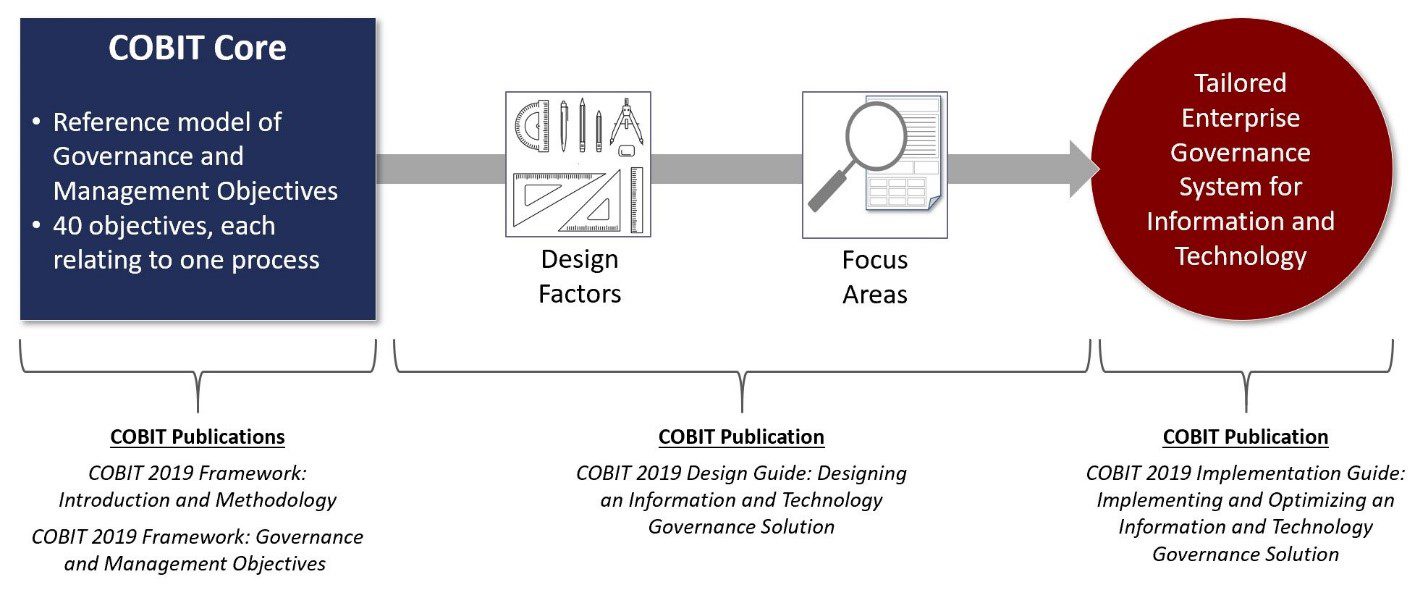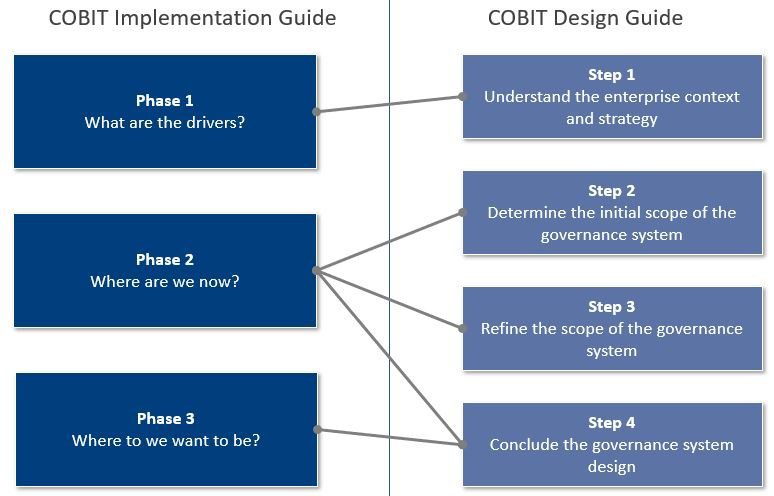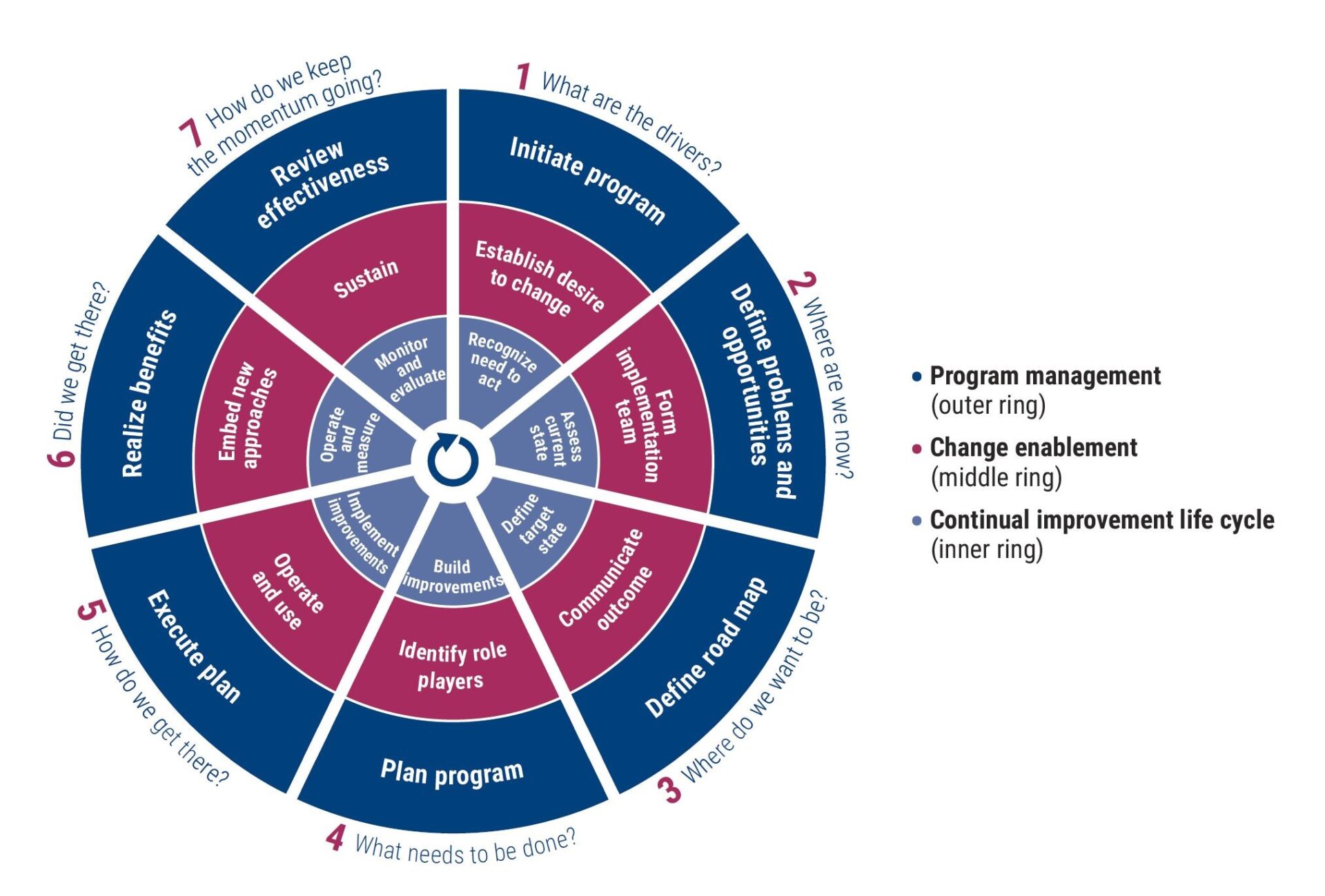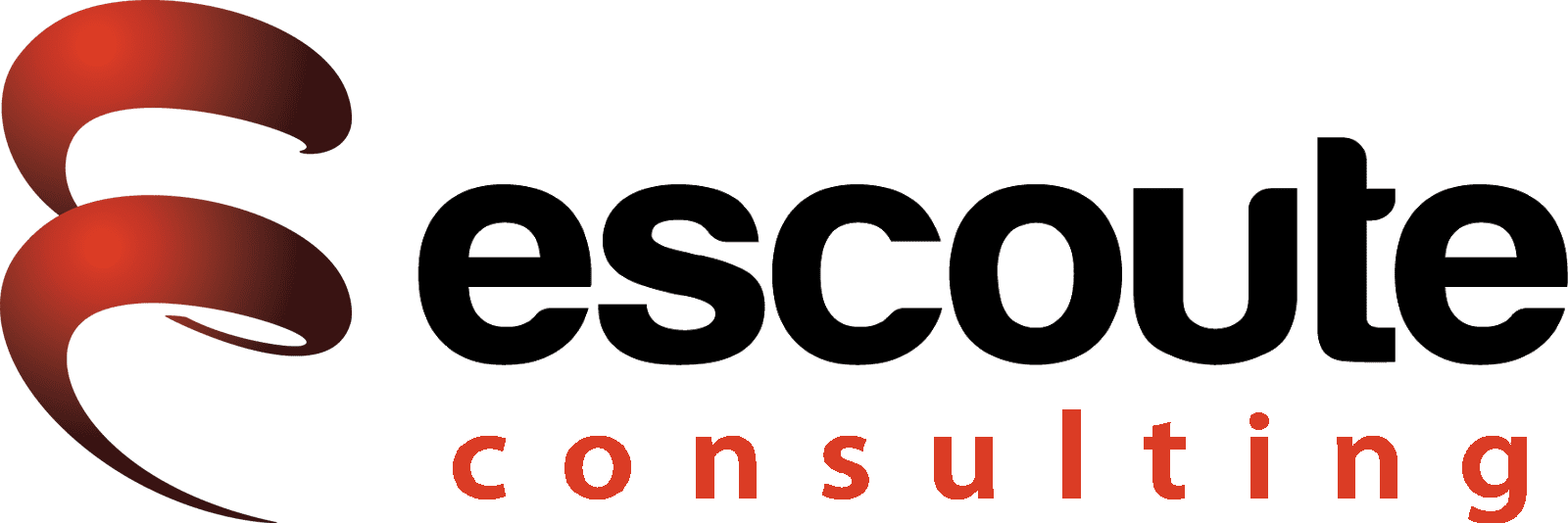In order to achieve competitive advantage, business must continually strive to innovate. Innovation, coupled with improved operational effectiveness and efficiency can exploit and leverage information technology that results in greater business value and potentially market share. In order to overcome the famous “open door, closed minded” policies that wreak havoc on thriving businesses, innovation must be understood, recognized and encouraged.
With so much focus on current operations, it’s often difficult to change mindset towards the future. This is where a having a formal process to manage innovation is key.
Enter COBIT.
Most IT and business professionals think of COBIT as a framework to assist in the security, control, and assurance of processes. The usual suspects include processes such as change, configuration, incident, security, and so on. If you look further in the framework, you may be surprised to find a process in the Align, Plan & Organize (APO) domain called APO04, Manage Innovation. This hidden gem, if used correctly, can provide a formal means of viewing the future of the business through a much more powerful lens – one that looks beyond the short term and encourages value creation through the qualification and staging of the most appropriate technology advances, methods and solutions.
Quoting directly from the COBIT5 Process Reference Guide (available on the ISACA website, www.isaca.org), the purpose of APO04, Manage Information is to “Maintain an awareness of information technology and related service trends, identify innovation opportunities, and plan how to benefit from innovation in relation to business needs. Analyze what opportunities for business innovation or improvement can be created by emerging technologies, services or IT-enabled business innovation, as well as through existing established technologies and by business and IT process innovation. Influence strategic planning and enterprise architecture decisions.”
If you are familiar with the process guide in COBIT5, you know that each process is described with a rich mix of information including: description and purpose, process goals and metrics, IT related goals and metrics, and management practices. Management practices consist of activities, RACI charts, and inputs/outputs. Although the goal of this is not to walk you through all of the details of the process, it’s important that we take a look at the management practices of APO04. These include:
- APO04.01. Create an environment conducive to innovation.
- APO04.02. Maintain an understanding of the enterprise environment.
- APO04.03. Monitor and scan the technology environment.
- APO04.04. Assess the potential of emerging technologies and innovation ideas.
- APO04.05. Recommend appropriate further initiatives.
- APO04.06. Monitor the implementation and use of innovation.
So what’s the business value? If you look in COBIT5, A Business Framework for the Governance and Management of Enterprise IT, you’ll find the goals cascade (see below). If you walk through the goals cascade, you will find that APO04 eventually supports multiple IT-Related Goals, Enterprise Goals, and Stakeholder Needs. Although this is only one way to identify business value, it’s a great start.

Reference: COBIT5, Goals Cascade Overview, Page 18. So, if you’re struggling with how to formally recognize innovation efforts in your IT organization, start with COBIT, you might find more than you expected. It is important to remember that COBIT is not a standard! It is a framework, and therefore designed with the flexibility that allows you to adjust processes and activities to meet your needs. In any case, don’t forget that the ultimate goal is to provide value for your customers, not just in the short term, but the long term as well. This is precisely why you should consider this process.
COBIT 2019 Governance and Management Objectives Domains
Each of the 40 Governance and Management objectives are aligned with an applicable domain. For example: Governance Objectives are found in EDM, while Management Objectives are in APO, BAI, DSS and MEA. Each of these objectives relates to one process. Therefore COBIT 2019 has 40 processes. The schematic below outlines these.
COBIT Governance and Management Objectives link to Processes.
This is very important to know because these objectives encompass all the potential areas that an enterprise needs to address to support the overall needs of its stakeholders. It is important to note here that all these objectives, or processes, do not need to be at the highest state of capability or level of implementation. The idea is that based on certain attributes, companies can tailor which ones, and to what level, are implemented. Which takes us to a tailored governance system.
Getting from the COBIT “Core” to a tailored governance system
One of the biggest challenges is taking the COBIT Core to a tailored system. This is where additional guidance is needed. There are many ways to do this, but to continually create value for the enterprise, make sure you consider your organization’s unique aspects. This is why COBIT introduced Design Factors and Focus Areas.
As with many frameworks, COBIT has historically been advertised as a flexible framework that can be modified to fit the needs of any enterprise. That sounds easy until you actually try to adopt a framework, so in the 2019 release, ISACA provide some much-needed guidance on how to do this. In addition to the guides there is also a very handy toolset that can get you started. I’ll show you more on that later.
What exactly does having a tailored governance system mean? This means that your enterprise has prioritized governance and management objectives, considered applicable design factors, used specific guidance from focus areas, and determined the target capability and performance management aspects of the system of governance over I&T.
Linking the COBIT2019 Core to a tailored system.
Design Factors and Focus Areas
In order to get from a framework with many options to a tailored system, design factors and focus areas should be considered.
Design factors can influence the blueprint of your enterprise’s governance system and position it for the successful use of I&T. Think of these as key points that can assist in creating a tailored governance system that truly aligns with specific and unique enterprise needs. The design factors include:
- Enterprise strategy
- Enterprise goals
- Risk profile
- I&T-related issues
- Threat landscape
- Compliance requirements
- Role of IT
- Sourcing model for IT
- IT implementation methods
- Technology adoption strategy
- Enterprise size
- Future factors
If you are looking for specific information on each of these design factors, refer to the COBIT 2019 Design Guide, pages 22-28.
Design factors have a huge impact on how you will design your governance system. There are three ways these can have influence and I have noted them below.
Impact of Design Factors.
A focus area “describes a certain governance topic, domain or issue that can be addressed by a collection of governance and management objectives and their components.” (COBIT Design Guide, ISACA). You can add or remove focus areas based on their applicability to your situation. These can include:
- Small and medium enterprises
- Cybersecurity
- Digital transformation
- Cloud computing
- Privacy
- DevOps
As of the writing of this post, there is no specific guidance released on leveraging Focus Areas in designing a tailored governance system. This information will most certainly be published by ISACA soon. Of course, I’m looking forward to this guidance as it really hits on some hot topics we’re seeing today.
Does the difference between Design Factors and Focus Areas still sound confusing to you? Don’t worry, it does to me too. I boil the difference down to this: think of DESIGN FACTORS as specific descriptions of your company while FOCUS AREAS are areas of influence, whether internal or external.
Workflow for designing a tailored governance system
COBIT 2019 provides a proposed workflow for designing this tailored governance system. Although the publication goes into greater detail, here is a summary of what the guidance looks like.
Steps to creating a tailored governance system using the COBIT Design Guide.
By following these steps (note, you are not required to complete ALL sub-steps), you can create a governance system that is tailored to your needs. This should provide prioritized governance and management objectives or related governance system components. However, this could result in conflicting guidance which is highly possible if you are using multiple design factors. As you most likely know, there is no magic formula to this. You may have to deal with discrepancies on a case-by-case basis. Our business environment is very dynamic, so as conditions and strategies change, you should also review the governance system regularly.
Linking the Design Guide and Implementation Guides
The good news is that the COBIT Implementation Guide in the 2019 update hasn’t really changed much since COBIT5. This is good in my opinion, it is a great model, it just needed some additional guidance – which we are getting with the Design Guide.
In case you are not familiar with this, the COBIT implementation roadmap looks like this:
The Seven Phases of the COBIT Implementation Roadmap. 2018 ©Information Systems Audit and Control Association, Inc. (ISACA).
The governance and management of enterprise I&T should be integrated with end-to-end enterprise governance. Therefore, the COBIT 2019 Implementation Guide emphasizes an enterprise-wide view of I&T governance, recognizing the relationship between business and IT-related activities.
COBIT suggests using a program approach to implementation, and I couldn’t agree more. If you look at the roadmap in the figure above, you will see that there are seven steps to an implementation approach and each step has three perspectives, or rings. The idea is that this cycle becomes a continuous approach until measurable benefits are generated, and the results become embedded in ongoing business activity. The goal is to establish the governance and management of enterprise I&T as a normal and sustainable business practice.
The Design Guide and Implementation Guide have a very distinct relationship and specific uses.
Although the Design Guide identifies some very specific synchronized points, the figure below summarizes how they are used together:
COBIT Design and Implementation Guide Relationships.
You may recognize that not all the phases in the Implementation Guide are linked to the design guide. This is because the first three phases are specifically related to the design of a governance system, while the remaining phases are focused on actual implementation. Personally, I refer to other frameworks to assist in the actual implementation. These are things like the PMBOK, PRINCE2, and of course processes in COBIT.
Using tools to assist in designing your new governance system
Finally! Let’s get to the fun stuff – seeing how this all comes together. When ISACA released the COBIT 2019 Design and Implementation Guides, they also released a toolkit that is available for download here. This Excel-based tool helps facilitate the application of the workflow I described above. The toolkit includes:
- Introduction and instructions
- A canvas tab that consolidates results including target capability levels
- One tab for each design factor
- Summary tabs that graphically represent the outcomes of steps 2 and 3
- Mapping tables for design factors
I highly suggest you go download this tool and play around with it a bit. All of the things I’ve talked about in this post will become clear. Of course, the tool is explained in more detail in the Design Guide, but check out this short clip that walks us through an example scenario. I’ve created some inputs for a fictitious global manufacturing company and developed a tailored governance system specifically designed for their needs. Hopefully this helps put it all together.
Closing and suggestions
We’ve covered a lot of ground in this post. I hope it has been valuable in helping you understand how leverage COBIT 2019 to truly create a governance and management framework that is customized to meet your specific enterprise needs.
As always, your thoughts and comments are appreciated on this post, as well as my Twitter posts @escoute1.


